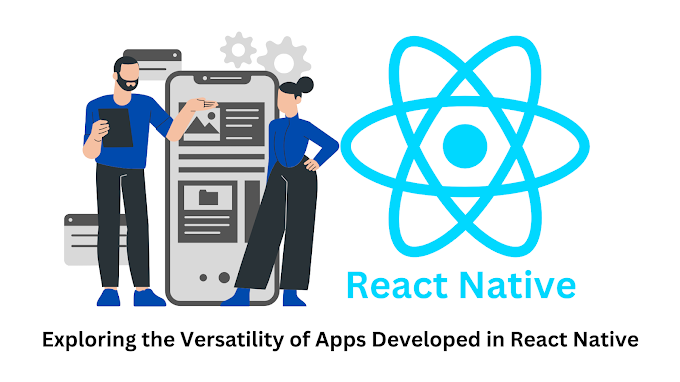Introduction
In the age of information, managing vast amounts of data efficiently and securely is a fundamental requirement for organizations and businesses of all sizes. Databases are the backbone of data management, and among them, MySQL stands as a stalwart, renowned for its reliability, performance, and open-source nature. In this comprehensive article, we will embark on a journey to explore MySQL, its history, core features, applications, and the pivotal role it plays in powering the modern data-driven world.
Chapter 1: The Genesis of MySQL
1.1. The Need for Databases
The evolution of data storage and retrieval has been closely intertwined with the history of computing. In the early days of computing, data was primarily stored in flat files, which posed limitations in terms of scalability, organization, and concurrent access. With the advent of database systems, the need for structured, efficient, and secure data management became evident.
1.2. The Birth of MySQL
MySQL, initially released in 1995 by Michael Widenius and David Axmark, emerged as a pioneering relational database management system (RDBMS). It was born out of the need for an open-source, robust, and performant database solution. Over the years, MySQL has evolved and matured into one of the most widely used databases in the world.
Chapter 2: Core Features of MySQL
MySQL's enduring popularity can be attributed to its core features and capabilities. Let's explore some of these key aspects:
2.1. Relational Database
At its core, MySQL is a relational database management system, which means it organizes data into tables with well-defined relationships. This relational model enables efficient data retrieval, querying, and data integrity.
2.2. Open Source
One of MySQL's standout features is its open-source nature. It is released under the GNU General Public License (GPL), making it freely available for use, modification, and distribution. This openness has contributed to its widespread adoption.
2.3. Cross-Platform Compatibility
MySQL is designed to run on various operating systems, including Linux, Windows, macOS, and more. This cross-platform compatibility ensures that developers can choose the environment that best suits their needs.
2.4. ACID Compliance
MySQL adheres to the ACID (Atomicity, Consistency, Isolation, Durability) properties, ensuring that database transactions are reliable and maintain data integrity, even in the face of system failures.
2.5. High Performance
MySQL is renowned for its exceptional performance, particularly in read-heavy and transactional workloads. Its optimized storage engines and indexing mechanisms contribute to its speed and efficiency.
2.6. Scalability
MySQL supports both vertical and horizontal scalability, allowing organizations to adapt to growing data demands. It can handle small, single-server deployments as well as large, distributed databases.
2.7. Security
MySQL prioritizes security with features such as encryption, user authentication, and access control mechanisms. Data protection and privacy are paramount concerns, especially in today's digital landscape.
2.8. Extensibility
MySQL can be extended with various plugins and storage engines to enhance functionality. For example, the InnoDB storage engine provides support for transactions and foreign keys, while full-text search capabilities can be added using plugins.
Chapter 3: MySQL in Action
MySQL's versatility and performance make it suitable for a wide range of applications and use cases. Let's explore some key areas where MySQL shines:
3.1. Web Applications
MySQL is a popular choice for powering the backend of web applications. It integrates seamlessly with web development frameworks and provides a reliable and efficient storage solution for web data.
3.2. Content Management Systems (CMS)
Many content management systems, including WordPress, Drupal, and Joomla, rely on MySQL databases to store and retrieve content, user data, and configuration settings.
3.3. E-commerce
E-commerce platforms, such as Magento and WooCommerce, leverage MySQL to manage product catalogs, customer information, order processing, and transaction data.
3.4. Business Intelligence (BI)
MySQL is used in BI applications to store and analyze large volumes of data. Its performance and scalability make it suitable for data warehousing and reporting tasks.
3.5. Mobile Applications
MySQL is a preferred database for mobile app development, providing data storage for mobile applications on both iOS and Android platforms.
3.6. IoT and Sensor Data
As the Internet of Things (IoT) continues to grow, MySQL is used to store and process data from sensors and connected devices, making it an integral part of the IoT ecosystem.
3.7. Gaming
Online gaming platforms, multiplayer games, and game leaderboards often rely on MySQL to manage player profiles, game progress, and scores.
Chapter 4: MySQL Variants and Editions
MySQL offers various variants and editions to cater to different needs and requirements. Let's explore some of the notable variants:
4.1. MySQL Community Server
The MySQL Community Server is the open-source version of MySQL, available for free. It includes all the core features of MySQL and is suitable for a wide range of applications.
4.2. MySQL Enterprise Edition
MySQL Enterprise Edition is a commercial offering that includes additional features, support, and tools designed for enterprise-level deployments. It offers advanced security, scalability, and high availability options.
4.3. MySQL Cluster
MySQL Cluster is a distributed, highly available, and real-time database solution designed for mission-critical applications. It provides automatic sharding and data replication for high performance and fault tolerance.
4.4. MySQL NDB Cluster
MySQL NDB Cluster is a specific variant of MySQL Cluster, optimized for telecom and network-related applications. It offers low-latency, high-throughput data access and is often used in telecommunications infrastructure.
Chapter 5: MySQL in the Modern Data Landscape
MySQL continues to evolve to meet the demands of the modern data landscape. Some of the recent trends and developments in MySQL include:
5.1. JSON Support
MySQL has enhanced its support for JSON data, allowing developers to store, query, and manipulate JSON documents within the database.
5.2. Spatial Data
MySQL supports spatial data types and spatial indexing, making it suitable for geospatial applications, location-based services, and mapping solutions.
5.3. NoSQL Capabilities
MySQL provides NoSQL access to data using the X Protocol and the MySQL Document Store. This enables developers to work with JSON documents in a NoSQL-like fashion.
5.4. Cloud Integration
MySQL offers integrations with various cloud platforms, allowing users to deploy, manage, and scale MySQL databases in the cloud.
Chapter 6: Conclusion
MySQL's journey from its inception to its current status as a cornerstone of modern data management is a testament to its reliability, performance, and adaptability. Its open-source nature, rich feature set, and strong community support have contributed to its widespread adoption across diverse industries and use cases.
As data continues to grow in volume and complexity, MySQL remains a trusted and versatile choice for organizations seeking robust data storage and management solutions. Its role in supporting web applications, content management systems, e-commerce platforms, and more is central to the digital infrastructure of today's world.
In a data-driven era, where information is a valuable asset, MySQL empowers organizations to harness the power of their data, make informed decisions, and build applications that shape the future. Embracing MySQL means joining a global community of developers, data professionals, and organizations dedicated to leveraging data to drive innovation and success in the modern age.












0 Comments